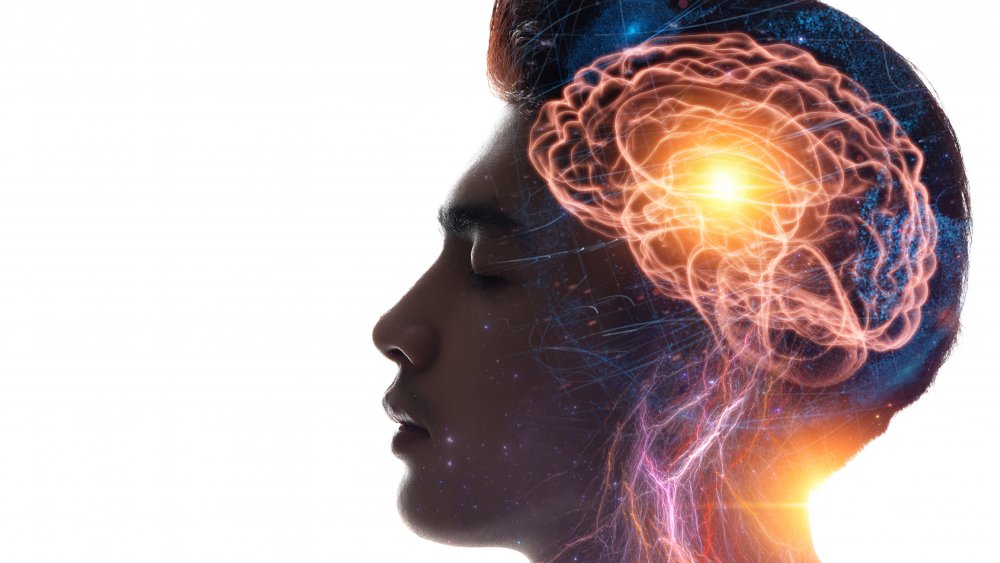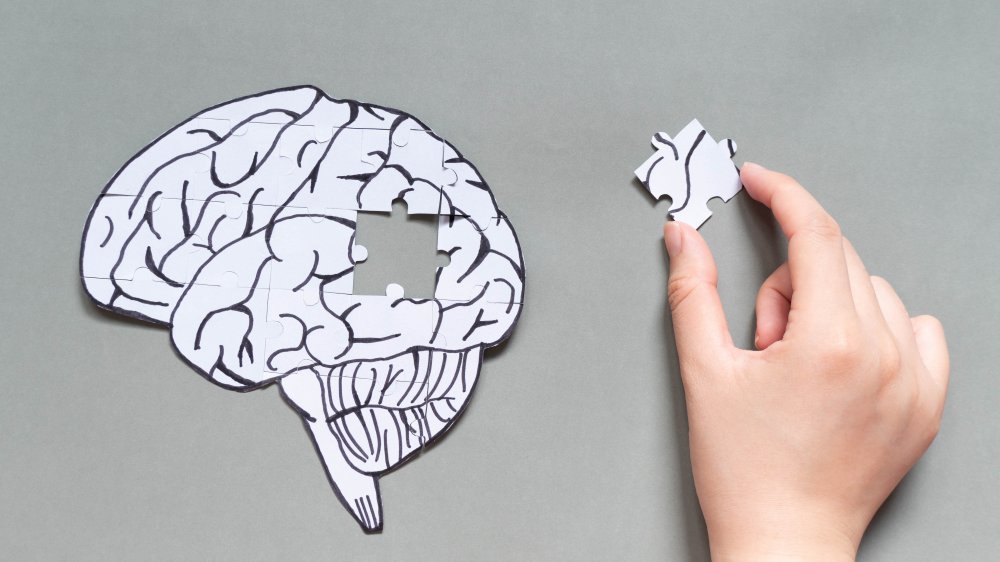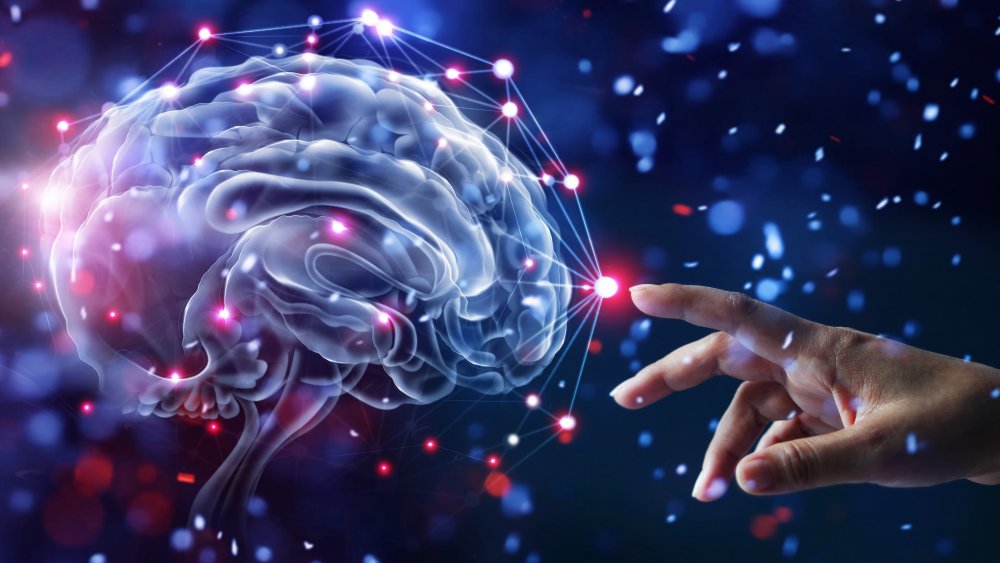What Percent Of Your Brain Do You Really Use?
Pretty sure you've heard that we humans only use 10 percent of our brains. You probably heard it from teachers or from movies. But, like many things school lied to you about, this is one fact that definitely doesn't stand up to actual science.
The truth is, while there's no known limit to what the brain can do, there are times when you're actually using 100 percent of your full brainpower. As explained by Scientific American, not all parts of the brain fire at once, but over the course of a day, a person would've used their full brainpower. That's because the majority of what you do, no matter how mindless it may seem, requires far more from your brain than you think. Things like your morning coffee routine activate various parts of the brain in a matter of seconds. Getting up to get the coffeepot, pour it in a mug, and leaving extra room for cream fires up the occipital and parietal lobes, motor-sensory and sensory-motor cortices, the basal ganglia, cerebellum, and the frontal lobes, said Scientific American. If it takes that much brainpower to make coffee, imagine how much more is required by something truly complicated, like understanding a lesson in school or writing a report.
Scientists said it's simply not fair to say 90 percent of your brain doesn't matter, because all parts of the brain work. There's no filler.
Where did that myth come from?
Where did the whole you-only-use-10-percent-of-your-brain thing come from, anyway?
Researchers point to different sources of the myth, but one that is often linked to it is psychologist William James's text The Energies of Men, published in 1907. In the essay, James argued that we are only using a small part of our possible mental and physical resources. Some people also attribute the idea to Albert Einstein, who is just naturally smarter than the rest of us. Psychology Today also credited the myth's creation to the neurosurgeon Wilder Penfield, who experimented with stimulating parts of the brain to treat epilepsy.
The myth gained so much ground that a 2013 survey sponsored by the Michael J. Fox Foundation for Parkinson's Research showed 65 percent of Americans believe that statement. Pop culture also plays a part. Think of any movie that involves psychic powers. Most of these explain the development of psychic abilities by harnessing more parts of the brain. No other film made a bigger deal out of the full 10 percent of the brain thing than 2014's Lucy, a movie The Atlantic called "mind-bendingly miscalculated." In that movie, Lucy (Scarlett Johansson) takes a drug that somehow unlocks the use of more areas of her brain. She begins levitating, reading minds, controlling TVs, and, once she reaches 100 percent, fades into consciousness itself and enters a computer. This was a real movie in actual theaters, promise.
They looked at MRIs just to be sure
Unfortunately, just because you truly use more than 10 percent of your brain, does not mean you're going to begin developing telekinesis.
Scientists have measured how much brainpower people use when doing certain activities. Healthline noted researchers look at brain activity through a magnetic resonance imaging (MRI). They ask people inside an MRI to look at photos or do certain exercises, and they study which parts of the brain light up when performing those functions. There's even an episode of MythBusters where they tested the 10 percent myth. The MythBusters team asked people to accomplish complicated mental tasks — word associations, memory drills, calculations — and found that people use at least 35 percent of their brains to perform those activities.
What scientists can generally agree on is that we don't yet fully understand the full brain. Scientific American said researchers continue to study the different parts of the brain to figure out the function of each. Generally, we know about neurons, but what about the glial cells that support neurons? What are their function? Nor do scientists know where consciousness comes from. We know that people use far more than 10 percent of their full brain capacity, but scientists are also still trying to understand more about how the brain works and what its full potential can be. In the meantime — sorry. You really can't make yourself read minds.


